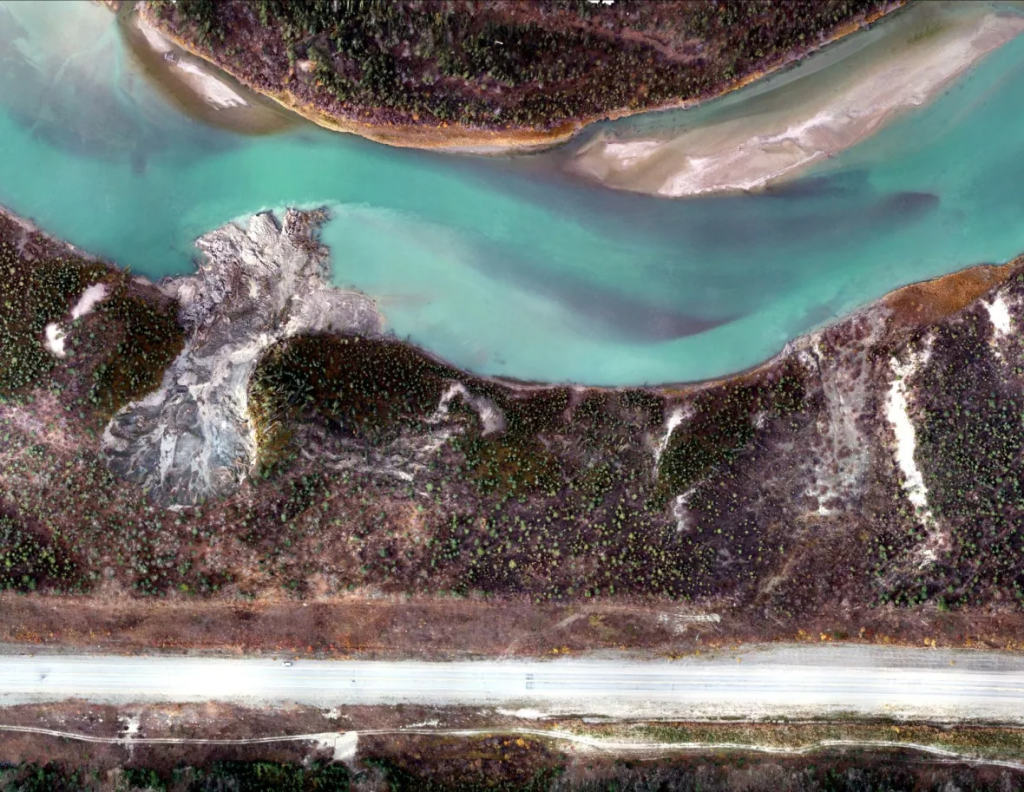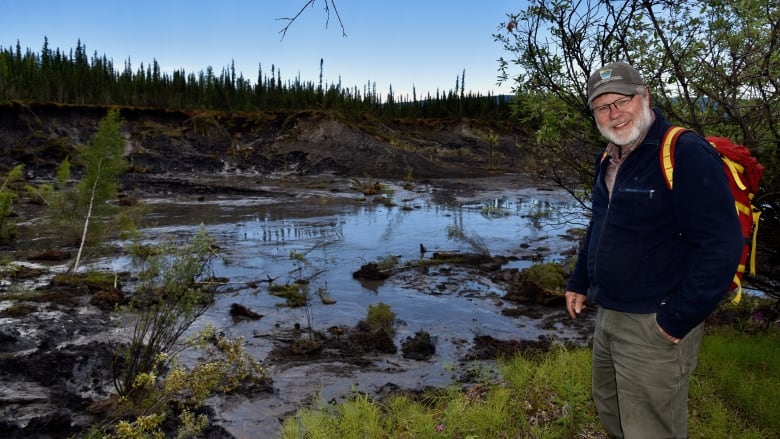Permafrost thaw in Yukon, Canada reaching ‘critical point’ in some areas, says researcher

Infrastructure costs will continue to go up as ground becomes more unstable, says Chris Burn
Permafrost in Canada’s northwest is thawing much faster than researchers predicted 20 years ago, according to the president of the International Permafrost Association.
And Chris Burn says the rate and extent of the thaw could mean massive problems that are simply impossible, or at least too expensive, to fix.
“In some places, the ground is reaching a critical point where it’s very close to thawing out completely,” Burn said.
“That really makes a big difference to the ability of the ground to bear structures like roads or buildings.”
Burn, a professor at Carleton University, has been studying permafrost in Yukon for four decades. In 2018, he was awarded the governor general’s Polar Medal for his ongoing research work.
He’s become increasingly alarmed by what he’s seen in recent years. It’s not just that permafrost is thawing faster, but also that new things are happening as a result.
Soil instability
As an example, he points to slumps and landslides that result from instability in the soil where thaw is happening. Landslides have become more common in many parts of Yukon, he says, including along the Dempster Highway. They’re plainly visible along one section near the Tombstone Mountains, he says.
“You can count something like 38 landslide tracks that weren’t there in 2015,” Burn said.
Some landslides have caused washouts that close the highway for periods of time. Road maintenance costs inevitably go up, he says.
“Those kinds of costs are substantial, and there’s no sign that those sorts of costs are going to plateau or decrease. They will just constantly increase as some of these events keep occurring frequently.”

He’s seen similar landslides in the Mayo Lake area, where he’s done a lot of research over the years. Elders in the area are also noticing the rate of change recently.
“They haven’t yet said that it’s a world that they don’t recognize,” Burn said. “But it’s that there are things that are happening much faster than anything that they’ve observed themselves over the sort of 70 to 80 years of their life.”
‘You lose the road’
This summer, Yukon University launched a new Permafrost Institute for research, touted as the first of its kind in Canada. A new mobile research unit planned to study permafrost along the territory’s highways and in remote communities this year.
That includes work with Yukon Highways and Public Works and Transport Canada to develop risk assessments for the Alaska and Dempster highways. The goal is to develop alarm systems to warn road users about hazards.
But according to Burn, such hazards may eventually become too big or too numerous to fix.
“With the temperature of the ground reaching between minus one and zero … that’s the temperature at which it’s very difficult to support structures,” he said.
“So ice that has been sitting there happily for about 12,000 years is now in danger of thawing out. And if that happens, you lose the road.”
Burn thinks it’s too late to turn things around. He says there’s already too much carbon dioxide in the atmosphere and so it’s impossible to “go back to some wonderful land that was there 200 years ago.”

The best to hope for now, he says, is to control emissions enough to stabilize things.
“Then there’s a possibility that we can reach some kind of balanced environment which isn’t changing further which we can sort of begin to manage,” he said.
“But if we don’t stabilize things, we will reach an environment that is completely beyond any of our experience.”
-With files from Kanina Holmes
Related stories from around the North:
Canada: New research chair at Laval University to help better understand permafrost changes in Arctic Quebec, Eye on the Arctic
Greenland: Tipping points: can a leaked report tip the scales to climate action? Blog by Irene Quaile
Norway: Polar bears face extinction in Svalbard and Arctic Russia says scientist, The Independent Barents Observer
Russia: Putin voices concern about melting permafrost, but doubts it’s caused by humans, The Independent Barents Observer
United States: Bering Sea ice at lowest extent in at least 5,500 years, study says, Alaska Public Media




Chris Burn/ Heard your excellent interview on CBC. Well done! A few days ago, at David Keith’s request, I organized a dinner meeting for him at which he briefed Yukon First Nation leaders on solar GEO-engineering. When they are ready, I plan to circulate notes from the meeting to my Arctic mailing lists. /tony p.